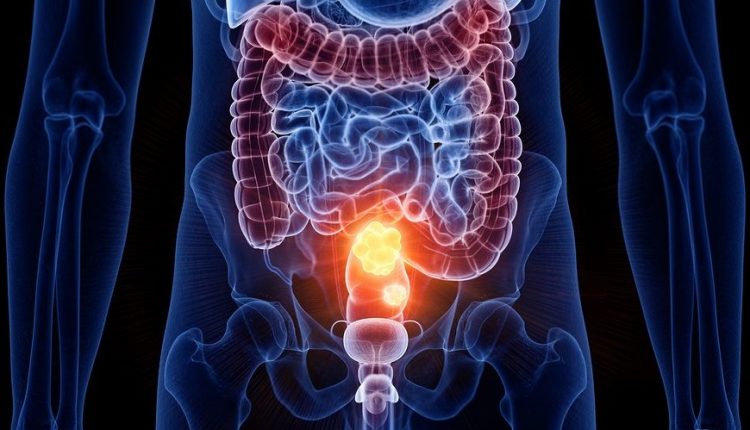
Colonoscopy: what it is, when to do it, preparation and risks
Colonoscopy is a moderately invasive diagnostic and therapeutic procedure used to directly view the inner walls of the large intestine (colon)
A thin, flexible probe – called a colonoscope – with a camera at the apex is used for this purpose.
The colonoscope is inserted after lubrication via the anus and then slowly moved up into the rectum and the other sections of the large intestine, to meet in order:
- sigma,
- descending colon,
- transverse colon,
- ascending colon,
- cecum.
When the last section of the small intestine, called the ileum, is reached, the colonoscope is withdrawn just as gently.
In order to ensure better visualisation of the colic mucosa, during colonoscopy it is necessary to relax the intestinal walls, which is achieved by insufflating carbon dioxide through the colonoscope; this special instrument, in addition to acting as a camera and insufflating air, can – if necessary – clean the walls of the colon with water, suck out the intestinal contents or act as a vehicle for surgical instruments with which to take tissue samples or remove polyps.
Colonoscopy is therefore not only for diagnostic purposes, but can also be used to perform biopsies and therapeutic interventions
However, its main application remains the investigation of the state of health of the colic mucosa in order to detect any lesions, ulcerations, occlusions or tumour masses in the images scrolling on the screen.
How is a colonoscopy performed?
The patient is made to lie down and the doctor inserts the colonoscope anally.
During the entire operation, the patient lies on his or her left side, but may be asked by the doctor to make small movements; painkillers and tranquillisers may be administered to make the examination more comfortable and alleviate unpleasant sensations, especially in anxious patients or those with a low pain threshold.
Overall, the investigation lasts about 30-40 minutes.
Colonoscopy: the indications
Colonoscopy essentially has two major fields of application: colon cancer screening and the search for diagnostic elements in the presence of signs and symptoms of an intestinal nature.
Colon cancer
Colonoscopy can be performed as a first- or second-level investigation for colon cancer screening.
For the population with no major risk factors other than age, guidelines recommend colonoscopy or sigmoidoscopy between the ages of 58 and 60, to be repeated every decade.
The two examinations are based on the same methodological principles, with the difference that sigmoidoscopy is limited to the endoscopic study of the last tract of the colon; its main disadvantage is that slightly less than half of adenomatous polyps and tumours form in the upper tract, while on the other hand it has the important advantage of being less invasive than and exposing the patient to a lower degree of risk.
Colonoscopy, on the other hand, while being considered the ‘gold standard’ for colon cancer screening, requires more troublesome preparation, a longer execution time and has a higher risk of negative side effects (such as intestinal perforation and bleeding), which may occur in 2-3 cases out of 1000 examinations.
For this reason, in low- to medium-risk persons, colonoscopy is mainly used as a second-level investigation following the detection of occult blood in the faeces or polyps by sigmoidoscopy.
In the presence of other risk factors, such as colon polyposis or a family history of this and other forms of cancer, the doctor may recommend colonoscopy as a first-level investigation from the age of 40 to 50 years every five to ten years.
Intestinal diseases
In addition to screening for colorectal cancer, colonoscopy is typically used to investigate the origins of symptoms such as abdominal pain, rectal bleeding, constipation or chronic diarrhoea, frequent changes in bowel movements (periods of constipation alternating with diarrhoeal episodes), sideropenic anaemia of unknown origin, tenesmus (feeling of incomplete stool evacuation), ribbon-like excreta and abundant mucus in the stool.
Many of these symptoms can also be traced back to cancerous forms of colorectal cancer.
Contraindications to colonoscopy
Colonoscopy is not recommended in cases of acute diverticulitis, toxic megacolon and when recovering from surgery in this section of the intestine, due to the increased susceptibility to the risk of intestinal perforation.
In some cases, traditional colonoscopy, the one we are talking about, can be replaced by virtual colonoscopy.
How do you prepare for a colonoscopy?
Particularly indicated are osmotic laxatives – such as isomalt, lactulose, mannitol, mannite, maltitol and polyols in general – which retain water in the intestinal lumen due to an osmotic effect and thus produce fluid stools (it is important to use them together with plenty of water).
Plants with a sedative and antispasmodic action, such as Valerian, passion flower, camomile, linden, peppermint, hawthorn, elderberry, mistletoe, hops, kava kava, lemon balm and yarrow are particularly recommended.
In the run-up to colonoscopy, it is important to discontinue the use of medicinal herbs that decrease the clotting capacity of the blood such as gingko biloba and garlic.
Read Also:
Emergency Live Even More…Live: Download The New Free App Of Your Newspaper For IOS And Android
Ulcerative Colitis: What Are The Typical Symptoms Of The Intestinal Disease?
Wales’ Bowel Surgery Death Rate ‘Higher Than Expected’
Irritable Bowel Syndrome (IBS): A Benign Condition To Keep Under Control
Intestinal Infections: How Is Dientamoeba Fragilis Infection Contracted?
Study Finds Link Between Colon Cancer And Antibiotic Use
Colonoscopy: More Effective And Sustainable With Artificial Intelligence
Colorectal Resection: In Which Cases The Removal Of A Colon Tract Is Necessary



